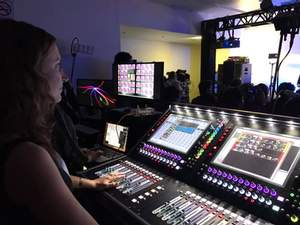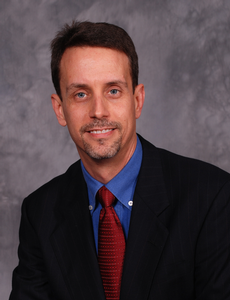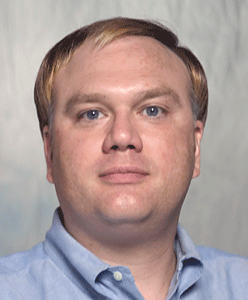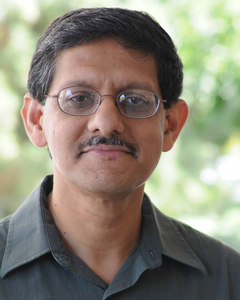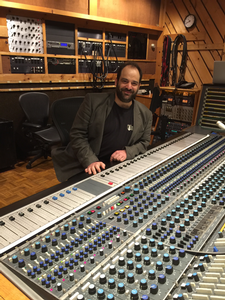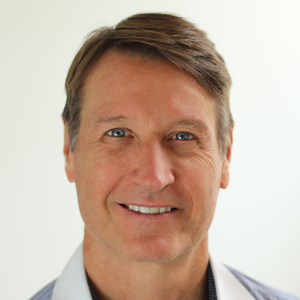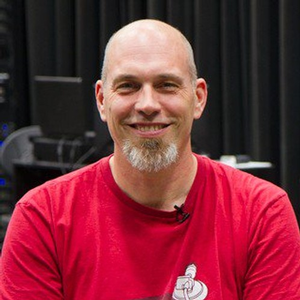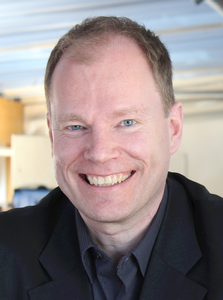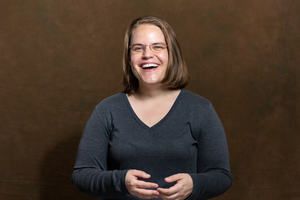AES New York 2019
Product Development Track Event Details
Wednesday, October 16, 9:00 am — 10:30 am (1E09)
Product Development: PD01 - The Predictable Horn: The Why, How, and When of Horn Simulation
Presenters:Mark Dodd, Celestion - Woodbridge, Suffolk, UK
Bjørn Kolbrek, Celestion - Ipswich, UK
David Murphy, Krix Loudspeakers - Henley Beach, South Australia, Australia
Joerg Panzer, R&D Team - Salgen, Germany
In the “good old days,” horns were designed to have an exponential wave front area expansion, and otherwise a geometry that “looked good.” Today numerical simulation of directivity and frequency response has become an important tool in the horn loudspeaker design process. What simulation methods exist, and what are their pros and cons? How does the chosen simulation method influence the work flow? And is simulation really necessary, or can horns with the desired properties be designed using experience, rules of thumb, and cut and try methods? In this workshop we will take a closer look at these questions.
Wednesday, October 16, 10:30 am — 12:00 pm (1E17)
Immersive & Spatial Audio: IS01 - ISSP: Immersive Sound System Panning. An Interactive Software Application and Tools for Live Performances
Presenter:Ianina Canalis, National University of Lanús - Buenos Aires, Argentina
Spatial audio has been gaining popularity in the area of commercial live performances, and immersive audio systems are now available for large as well as small concerts. There are a number of challenges in developing and implementing immersive and spatial audio systems; in particular the use of dedicated hardware interfaces. This workshop introduces the Immersive Sound System Panning (ISSP) software application, which allows a free choice in the position of the speakers and sound sources. ISSP has two versions; the first one processes the audio in a DiGiCo mixer and the second one, in a computer.
This software was designed with the specific aim of making it user-friendly and to make an immersive system that is more intuitive to mixing engineers, artists, and the public. The tools have been designed with the express needs of sound engineers and artists in mind, specifically as spatial sound is a new way of expressing music. The idea is that artists and the public can also take part in what happens with the audio as involving them will intensify the experience for everyone.
This workshop showcases the Immersive Sound System Panning (ISSP) application, the main features of the software and the tools that have been developed to spatialize the sound within the space. Within the workshop, the audience will be encouraged to get/use hands-on with the app and demonstrate its features, showing the intuitive nature of the app design and the ease with which sounds can be panned around the space.
https://www.youtube.com/watch?v=Aw-YseB23R0
Wednesday, October 16, 10:30 am — 12:00 pm (1E09)
Product Development: PD02 - Directivity Optimization of a Passive Loudspeaker System
Presenter:Charles Hughes, Excelsior Audio - Gastonia, NC, USA; AFMG - Berlin, Germany
Almost all types of loudspeaker systems will benefit from having a consistent directivity response with respect to frequency. It is an important contributor for the loudspeaker system to be able to sound good in different rooms with different acoustical properties. This is often overlooked or relegated in importance in order to give priority to the on-axis frequency response. This seems particularly true when dealing with two-way loudspeaker systems employing a passive crossover. However, this need not be the case. In this session the performance of a product recently evaluated from an overseas ODM / CM will be examined. We will detail how software modeling and simulations can be used to optimize the passive crossover to improve the directivity of the loudspeaker system through the crossover region. A single-channel of front-end DSP can then be used to equalize the overall response of the loudspeaker system. Since the directivity response is more consistent, the equalization can be more effective at improving the sound quality of the loudspeaker system.
Wednesday, October 16, 2:30 pm — 3:45 pm (1E09)
Product Development: PD03 - Patents and Product Development
Presenters:Joseph Reid, Perkins Coie - San Diego, CA, USA
John Strawn, S Systems, Inc. - Larkspur, CA, USA
Babak Tehranchi, Perkins Coie - San Diego, CA, USA
Forewarned is forearmed. How often has a company found itself in a lawsuit regarding patents, a lawsuit that could have been avoided? The best defense is to incorporate intellectual property into every stage of the product development process: market opportunity, your competitors, concept, design, implementation, marketing, release, and protecting your inventiveness. We will cover the basics of patents including what a patent is, how you can get a patent for your work, and what happens in litigation if you are attacked or you need to protect your rights.
Wednesday, October 16, 2:45 pm — 4:15 pm (1E13)
Networked Audio: NA02 - An Introductory Tutorial to AES70
Presenters:Jeff Berryman, OCA Alliance
Simon Jones, Focusrite - High Wycombe, Bucks, UK
Ethan Wetzell, OCA Alliance - New York, NY, USA
AES70, also known as OCA, is an architecture for system control and connection management of media networks and devices. AES70 is capable of working effectively with all kinds of devices from multiple manufacturers to provide fully interoperable multivendor networks. In this session the presenters will provide an overview of the AES70 standard. Aimed at developers, users, and technical decision makers, members of the OCA Alliance will cover topics such as the object model, developer resources, and the current and future objectives of the standard.
Wednesday, October 16, 3:15 pm — 4:45 pm (1E21)
Recording & Production: RP04 - Spatial Audio Microphones
Moderator:Helmut Wittek, SCHOEPS Mikrofone GmbH - Karlsruhe, Germany
Panelists:
Svein Berge, Harpex Ltd - Berlin, Germany
Gary Elko, mh acoustics - Summit, NJ USA
Len Moskowitz, Core Sound LLC - Teaneck, NJ, USA
Tomasz Zernicki, Zylia sp. z o.o. - Poznan, Poland
Multichannel loudspeaker setups as well as Virtual Reality applications enable Spatial sound to be reproduced with large resolution. However, on the recording side it is more complicated to gather a large spatial resolution. Various concepts exist in theory and practice for microphone arrays. In this workshop the different concepts are presented by corresponding experts and differences, applications as well as pros and cons are discussed. The different array solutions include coincident and spaced Ambisonics arrays as well as Stereophonic multi-microphone (one-point) arrays.
 | This session is presented in association with the AES Technical Committee on Microphones and Applications |
Wednesday, October 16, 4:00 pm — 5:30 pm (1E09)
Product Development: PD04 - Microphone Electroacoustics
Presenter:Christopher Struck, CJS Labs - San Francisco, CA, USA; Acoustical Society of America
This presentation introduces the basic concepts of microphones, principles of operation, and common applications. Equivalent circuits for condenser, dynamic moving coil, ribbon, and piezoelectric microphone technologies are described. Well-known, contemporary versions – some replicas of classic designs – are shown as examples of each type. Pressure and pressure gradient microphones are described. Various configurations of 1st order directional microphones are described and their associated directionality metrics are detailed. The response of shotgun and parabolic microphones are given. An overview of the principles of higher order directional microphones and their performance is given. Examples of special purpose devices such as boundary layer (PZM) microphones and manikins for binaural recording or electroacoustic measurements are shown. Line arrays and adaptive systems are also discussed. Preamplifiers, powering, and balanced vs. unbalanced operation of microphones are described. Measurements, standards, and specifications are explained, including: Frequency response, sensitivity, polar response, equivalent input noise, 2-tone distortion, and calibration. The effects of wind noise and stands and adaptors are also given. References for additional detailed information are also provided.
Wednesday, October 16, 4:15 pm — 5:45 pm (1E17)
Immersive & Spatial Audio: IS03 - Reproduction and Evaluation of Spatial Audio through Speakers
Presenters:Juan Simon Calle Benitez, THX Ltd. - San Francisco, CA, USA
Patrick Flangan, THX Ltd.
Gavin Kearney, University of York - York, UK
Nils Peters, Qualcomm, Advanced Tech R&D - San Diego, CA, USA
Marcos Simon, AudioScenic - Southampton UK; University of Southampton - Southampton, UK
A lot has been discussed about the reproduction of spatial audio in headphones as it is a controlled environment to generate the signals that trick our brain to believe there are sources outside of our head. Speakers are another way to reproduce spatial audio, but less development and evaluation has been done as it is harder to reproduce binaural audio without coloration to the signal. In this panel we will discuss the benefits, the challenges, and the ways we can evaluate spatial audio reproduction in speakers. We will discuss topics like crosstalk cancellation, wavefield synthesis and multichannel arrays applied to real life applications like virtual surround, virtual reality and augmented reality and how to test subjectively and objectively the different characteristics of 3D audio.
 | This session is presented in association with the AES Technical Committee on Audio for Games and AES Technical Committee on Spatial Audio |
Wednesday, October 16, 5:30 pm — 6:00 pm (Demo rooms)
Product Development: PD05 - Vendor Event 1: Audio Precision
Thursday, October 17, 9:00 am — 10:30 am (1E12)
Student / Career: SC06 - AES MatLab Plugin Student Competition
MathWorks is supporting the AES MATLAB Plugin Student Competition and Showcase which invites students to design a new kind of audio production VST plugin using MATLAB Software. The competition provides students with the opportunity to challenge both their signal processing skills and creativity, and to share their results with the audio engineering community.
The following submissions were chosen by the judges to be presented in front of the audience. These projects are considered to win cash and software prizes. Meritorious awards are determined here and will be presented at the closing Student Delegate Assembly Meeting (SDA-2). Learn more about this competition at aes.org/students/awards.
• Edward Ly, "Inner Space," University of Aizu
• Domenico Andrea Giliberti, Festim Iseini, Nicola Ignazio Pelagalli, Alessandro Terenzi, "BEStEx - Bass Enhancer Stereo Expander," Universita Politecnica delle Marche
• Christian Steinmetz, "flowEQ," Universitat Pompeu Fabra
• Sean Newell, "Shift Drive," Belmont University
• John Kolar, "Dynamizer: Amplitude Modulator & Audio Effects Plugin," West Virginia University
• Michael Nuzzo, "Spectrum Pixelator," University of Massachusetts-Lowell
Thursday, October 17, 9:00 am — 10:30 am (1E09)
Product Development: PD06 - Can DSP Fix a Bad Speaker?
Presenter:Jonathan Gerbet, Klippel GmbH - Dresden, Germany
Adaptive nonlinear loudspeaker control algorithms implemented in low-cost DSPs allows speakers to be driven very close to their physical limits, producing the maximum SPL and increasing the reliability. While distortion caused by deterministic motor and suspension nonlinearities can be canceled by digital signal processing, residual distortion commonly known as “Rub&Buzz” becomes more audible and has to be fixed by the transducer manufacturer or system integrator as it can never be compensated by electrical means. This tutorial focuses on particularities, design goals, and requirements of optimal passive systems for adaptive nonlinear control. Measurement methods that combine perceptual and physical metrics are introduced to provide a comprehensive evaluation of the transducer, enclosure and amplifier intended for adaptive nonlinear control.
Thursday, October 17, 10:15 am — 11:45 am (1E17)
Electronic Instrument Design & Application: EI02 - Not Your Everyday Filters
Presenter:Jayant Datta, Audio Precision - Beaverton, OR, USA
The purpose of this tutorial is to introduce and expose audio engineers to additional filters that have interesting properties but are not as commonly known to our community.
In this tutorial
We take a deeper look at allpass filters – where phase (instead of frequency shaping) is used as a manipulating tool
We take a closer look at real-time zero-phase IIR filtering techniques
Finally, we look at multi-rate sampling systems, where in addition to polyphase FIR filters we also look at polyphase IIR approaches
 | This session is presented in association with the AES Technical Committee on Signal Processing |
Thursday, October 17, 10:15 am — 11:45 am (1E08)
Game Audio & XR: GA08 - Introduction to Machine Learning for Game Audio
Presenters:Krystle Becknauld
John Byrd, Gigantic Software - Santa Ana, CA, USA
In the past four years, every tech industry has put machine learning systems into production. Virtual assistants, cybersecurity systems, and self-driving cars are all built on machine learning. However, none of these novel algorithms are being used in the interactive entertainment industries.
This talk summarizes the most important new research in this exciting new field and describes novel applications of machine learning, specifically for interactive audio. You'll see demonstrations and code for: automatic feature extraction, classification, silence removal, tempo extraction, automatic speaker detection, emotion detection, convolutional and recurrent neural networks, variational autoencoders, and WaveNet. Additionally, this talk will show you the state of the art in interactive audio, and it will also tell you what will be possible, until the year 2030.
 | This session is presented in association with the AES Technical Committee on Audio for Games |
Thursday, October 17, 10:45 am — 12:15 pm (1E09)
Product Development: PD07 - Introducing A2B – A Low-Latency Digital Audio Bus Standard
Presenters:Joseph Beauchemin, Analog Devices
Denis Labrecque, DeLab Consulting - Half Moon Bay, CA, USA
A2B is a de-facto digital audio communication standard developed to input and deliver deterministic, very low latency (< 50 microseconds) audio across multiple nodes. Multiple microphone arrays and speakers can be connected to the same daisy-chained unshielded twisted-pair (UTP) wires carrying both digital microphone and I2S/TDM audio signals (up to 32 channels), as well as control information and bus power. This presentation will explain the capabilities of A2B and how it works, illustrating how the low-latency A2B bus enables new applications like simplified multichannel pickup cabling and other multichannel digital I/O for music instruments/effects, as well as mixing consoles, robotics applications, and more. The presentation will also demonstrate how easy it is to use the A2B bus to bidirectionally transmit synchronous audio data (I2S/TDM-to-I2S/TDM) and control/status information (I2C-to-I2C) across multiple bus nodes in an A2B system.
Thursday, October 17, 10:45 am — 12:15 pm (South Concourse A)
Student / Career: SC08 - Saul Walker Student Design Competition
All accepted entries to the AES Saul Walker Student Design Competition are given the opportunity to show off their designs at this poster/tabletop exhibition. The session is an opportunity for aspiring student hardware and software engineers to have their projects seen by the AES design community. It is an invaluable career-building event and a great place for companies to identify their next employees. Students from both audio and non-audio backgrounds are encouraged to participate. Few restrictions are placed on the nature of the projects, which may include loudspeaker designs, DSP plug-ins, analog hardware, signal analysis tools, mobile applications, and sound synthesis devices. Attendees will observe new, original ideas implemented in working-model prototypes.
Thursday, October 17, 12:15 pm — 1:30 pm (Demo rooms)
Product Development: PD08 - Vendor Event 2: Analog Devices
Demo Room 2D03
Analog Devices’ A2B digital audio bus is a new way to distribute bi-directional multi-channel audio. Previously only available to tier 1 automotive customers, A2B is now being released for the broad market for pro audio applications such as conference rooms, studio monitoring, rack-to-rack and board-to-board digital communication, and more. This session will feature a live, interactive demonstration of the A2B topology discussed in PD07 and will focus on a real-time configuration of multiple microphones and speakers utilizing the SigmaStudio development/deployment tools.
Thursday, October 17, 1:00 pm — 1:45 pm (1E12)
Acoustics & Psychoacoustic: AP03 - Shame on Us: Phase Is Not Polarity!
Presenter:Cesar Lamschtein, Kaps Audio Production Services - Montevideo, Uruguay; Mixymaster - Montevideo, Uruguay
Being disappointed with the industry regarding how messy the concepts of PHASE and POLARITY get to students, general amateur audio enthusiasts and even seasoned professionals. I think that AES is to the only one that can and SHOULD do something to encourage the stopping of the practice of freely exchanging these terms.
E.g, • major console brands, either analog and digital in either plain word or the ø symbol; • Daw software (nuendo, reaper, etc.); • outboard equipment (including such classics as 1073 neve eq); • videos (Allan Parsons MTCS DVD); • books.
During this presentation I will: • Acknowledge the situation: I´ll show the results of a survey done on the 2 past NY conventions, where 100% of the polarity switches in the exhibition floor was reviewed and photographed, showing inconsistency in the naming of the switch even in different products from the same manufacturer; • Teach terms: I´ll state actual definitions and clarify the concepts of phase and polarity with audio examples of each; • Encourage the discussion: I want to gather people together to nourish this venture, discussing possible abbreviation and symbol (ICON) to represent polarity in order to gather information that may lead to an AES TD; • I´ll invite fellow audio men and women to speak properly about those important concepts (and THEN be able to think properly about this quite basic concepts, albeit misunderstood).
Thursday, October 17, 1:30 pm — 3:00 pm (1E09)
Product Development: PD09 - Does Automotive Audio Need a Systems Approach?
Chair:Roger Shively, JJR Acoustics, LLC - Seattle, WA, USA
Panelists:
John Busenitz, Bose Corporation - Framingham, MA, USA
Pietro Massini, Ask Industries S.p.A. - Monte San Vito (AN), Italy
Greg Sikora, Harman International - Munich, Germany
Steve Temme, Listen, Inc. - Boston, MA, USA
Some component specifications do not translate to good system performance. A good example is resonance frequency. This often does not correspond well to performance characteristics in the automotive environment. Some potential improvements would be low-frequency SPL, or a parameter combination such as Fs/Qts or EBP (Fs/Qes). The system performance goals should drive the transducer component specification. Hence, this workshop will host leading industry experts in automotive audio and test/measurement solutions to discuss pros and cons of component vs. system specifications.
 | This session is presented in association with the AES Technical Committee on Automotive Audio |
Thursday, October 17, 3:15 pm — 4:30 pm (1E09)
Product Development: PD10 - Diagnostics for Production Vehicle Audio Systems
Presenters:Jonathan Gerbet, Klippel GmbH - Dresden, Germany
Steven Hutt, Equity Sound Investments - Bloomington, IN, USA
Steve Temme, Listen, Inc. - Boston, MA, USA
Audio systems in production vehicles are known to exhibit vehicle to vehicle performance variance [1]. The root causes of variance can include loudspeaker driver manufacturing tolerance, mounting issues such as missing or misaligned gaskets, or wrong loudspeaker drivers mounted in the system. A diagnostics method to compare actual production vehicle audio systems is defined along with a method for correction and calibration of production vehicle audio systems. The diagnostics procedure may be implemented at production end-of-line, at vehicle distribution center or at a dealer service center in the field after delivery to a customer.
 | This session is presented in association with the AES Technical Committee on Loudspeakers and Headphones |
Thursday, October 17, 4:00 pm — 5:30 pm (1E17)
Electronic Instrument Design & Application: EI04 - Embedded Computing and Instrument Design
Moderator:Paul Lehrman, Tufts University - Medford, MA, USA
Panelists:
Richard Graham, Delta Sound Labs - Cleveland, OH, USA
Andrew Ikenberry, Qu-Bit Electronix - San Clemente, CA, USA
Denis Labrecque, DeLab Consulting - Half Moon Bay, CA, USA
Teresa Marrin Nakra, The College of New Jersey - Trenton, NJ, USA; Immersion Music, Inc.
David Rossum, Rossum Electro-Music LLC - Santa Cruz, CA, USA; Universal Audio, Inc - Scotts Valley, CA USA
Embedded computing systems based on common platforms such as Arduino, Raspberry Pi, BeagleBone, and Bela offer powerful, flexible platforms for prototyping new electronic instrument designs. This session will offer perspectives from both research and independent builder communities on innovative use cases and future directions.
Thursday, October 17, 4:30 pm — 5:30 pm (1E09)
Audio Builders Workshop: AB03 - Project to Product
Chair:Owen Curtin, Audio Builders Workshop - Lexington, MA, USA; Bridge Sound and Stage - Cambridge, MA, USA
Panelists:
Robert-Eric Gaskell, McGill University - Montreal, QC, Canada
Peterson Goodwyn, DIY Recording Equipment - Philadephia, PA, USA
Denis Labrecque, DeLab Consulting - Half Moon Bay, CA, USA
Brewster LaMacchia, Clockworks Signal Processing LLC - Andover, MA, USA
Techniques and Resources for Turning Your DIY Hobby into a Scalable Business.
Friday, October 18, 9:00 am — 12:00 pm (1E12)
Sound Reinforcement: SR05 - AC Power, Grounding, and Shielding Super Session
Presenters:Bruce Olson, Olson Sound Design, LLC - Minneapolis, MN, USA; AFMG Services North America, LLC - Minneapolis, MN, USA
Bill Whitlock, Whitlock Consulting - Ventura, CA, USA
Significant misinformation still persists about what is needed for AC power, and proper grounding, for events — much of it potentially life-threatening advice. Two of the leading authorities on the subject will discuss in detail how to provide AC power properly and safely and without causing noise problems. The session will cover theory and practice of AC power for small to large sound systems, from a couple boxes on sticks up to multiple stages in ballrooms, road houses, and event centers; large scale installed systems, including multiple transformers and company switches, service types, generator sets, 1ph, 3ph, 240/120 208/120.
Friday, October 18, 9:00 am — 10:30 am (1E09)
Product Development: PD11 - Product Management Modeling
Presenter:Scott Leslie, PD Squared - Irvine, CA USA
Product Management has advanced to become arguably the most important part of Product Development. Being able to research, develop, and present the product definition before design begins leads to more successful products that come to market in less time. Modeling the different dimensions of a proposed product brings a much higher level of understanding and confidence in making key decisions.
In this workshop you will learn how to model in detail the following dimensions:
1) Pricing
2) Market Share
3) Financial Pro Formas
4) Forecasting integrating existing, overlapping and complimentary products
5) Product performance and specifications
6) Product costing and analysis
7) Project planning, costing, and resourcing
8) High Level Summary of all underlying models
This workshop is targeted to current and future product managers, engineering managers, development engineers, manufacturing engineers, and supply chain people. All of these roles can participate and add value to the product management function by participate in the modeling process.
Friday, October 18, 10:45 am — 12:15 pm (1E09)
Product Development: PD12 - Advanced Materials for Audio Products
Presenter:Michael Klasco, Menlo Scientific Ltd. - Richmond, CA, USA
The advances in materials science in the last few years has been remarkable. Product demand in all categories are driving this rapid advancement. In this session, we will cover the latest in materials now being used for and being planned for the next generation audio products.
New plastics that are stiffer and better damped than commodity plastics result in less enclosure buzz and smoother response. Active noise canceling and acoustic echo cancelers especially benefit from these materials. Nano materials enhance water repellent surface treatments to CVD coatings for enhanced structural integrity. Thermoplastic carbon fiber composites deliver high strength for speaker diaphragms to horns and enclosures with fast forming speed compared to thermosets. Ongoing development of graphene for microphones, headphones and micro-speakers promises significant performance advances. Elastic (helical conductor) audio cables provide elongation to 40% while delivering non-tangling and non-microphonic (no body noise).
You will see examples of the materials available so you as a product developer can start seeing how your products ride the next wave of ultra-materials.
At the talk tickets to special demos at booth #457 Friday from 12:30 to 1:30 pm for hands-on (and ears-on) for the technologies discussed during the product track talk.
Friday, October 18, 12:15 pm — 1:30 pm (Demo rooms)
Product Development: PD13 - Vendor Event 3: Menlo
Friday, October 18, 1:15 pm — 2:15 pm (1E12)
Acoustics & Psychoacoustic: AP06 - Circles of Excellence
Moderator:Thomas Lund, Genelec Oy - Iisalmi, Finland
Panelists:
Florian Camerer, ORF - Austrian TV - Vienna, Austria; EBU - European Broadcasting Union
Bob Katz, Digital Domain Mastering - Orlando, FL, USA
George Massenburg, Schulich School of Music, McGill University - Montreal, Quebec, Canada; Centre for Interdisciplinary Research in Music Media and Technology (CIRMMT) - Montreal, Quebec, Canada
30.000 year old cave paintings are among human beings' most impressive cultural heritage, while we are unable to experience how music by great composers sounded just 300 years ago.
The experts on the panel will try to separate the facts from the myths surrounding recording, monitoring and reproduction, and explain which of the elements they have found most essential in their work to make it stand the test of time. The panel is a continuation of the more theoretical AP04 discussion on Thursday.
Friday, October 18, 1:30 pm — 3:00 pm (1E09)
Product Development: PD14 - Deep Learning and AI for Audio Applications - Engineering Best Practices for Data
Presenter:Gabriele Bunkheila, MathWorks - Madrid, Spain
Audio, speech, and acoustics are increasingly recognized as the second largest application area for deep learning after computer vision. Deep learning and AI are defining a new era in product development as they need vast amounts of task-specific labeled data to be successfully optimized for real-world applications. As deep learning is increasingly used alongside more traditional signal processing methods, the focus of audio DSP engineering is gradually expanding from algorithms to data.
In this session, we discuss the importance of signal processing and audio data engineering for the development of deep learning systems. Using practical examples based on MATLAB, we review best practices for audio data workflows in AI applications, including for signal labeling, data ingestion, data augmentation, feature extraction, and signal transformation.
Friday, October 18, 3:15 pm — 4:45 pm (1E09)
Product Development: PD15 - Hardware Development Using JIRA
Presenter:Remi Vaucher, QSC - Costa Mesa, CA, USA
In line with the "Virtual Product Development" theme this presentation will show how to define "evolving" templates of product development based on AGILE methodology and their adaptation into a real development.
* Problems met during traditional product development and a way to solve them -> Management of all Products REQUIREMENTS, TASKS & QUALIFICATIONS using JIRA/Confluence from Atlassian
* Organizing the execution of the hardware development (in our case a powered speaker, including Acoustic, DSP, Amplifier & mechanical components) using an AGILE "like" process (derived from the SCRUM process used for Software).
* Configuring JIRA/CONFLUENCE to meet our goals
* Real Experiment : this new approach has been prototyped successfully during 10 months, improvements and take away will be discussed.
Friday, October 18, 4:45 pm — 5:45 pm (1E08)
Acoustics & Psychoacoustic: AP08 - Listening Tests - Understanding the Basic Concepts
Presenter:Jan Berg, Luleå University of Technology - Piteå, Sweden
Listening tests are important tools for audio professionals as they assist our understanding of audio quality. There are numerous examples of tests, either formally recommended and widely used or specially devised for a single occasion. In order to understand listening tests and related methods, and also to potentially design and fully benefit from their results, some basic knowledge is required. This tutorial aims to address audio professionals without prior knowledge of listening test design and evaluation. The fundamentals of what to ask for, how to do it, whom to engage as listeners, what sort of results that may be expected, and similar issues will be covered.
 | This session is presented in association with the AES Technical Committee on Perception and Subjective Evaluation of Audio Signals |
Saturday, October 19, 9:00 am — 10:30 am (1E09)
Product Development: PD16 - How To Add AES70 Control to Your Products
Presenters:Jeff Berryman, OCA Alliance
Simon Jones, Focusrite - High Wycombe, Bucks, UK
Ethan Wetzell, OCA Alliance - New York, NY, USA
AES70, also known as OCA, is an architecture for system control and connection management of media networks and devices. AES70 is capable of working effectively with all kinds of devices from multiple manufacturers to provide fully interoperable multi-vendor networks. In this session the presenters will provide a deep-dive on the architecture and implementation of the standard, demonstrating how to implement AES70 inside of a device and how AES70 controllers work. Aimed at developers, members of the OCA Alliance will cover topics such as the object model, class tree, protocol and implementation options, and practical advice for AES70 implementation.
Saturday, October 19, 10:45 am — 12:15 pm (1E09)
Product Development: PD17 - Using Gage R&R Tools to Validate and Characterize Acoustic Measurement Systems
Presenter:Emily Wigley, Acoustical Engineer, Shure Inc. - Chicago, IL, USA
Product performance is validated through measuring, but how is the system used to take the measurement validated? This is of particular concern in developing end-of-line production measurement systems that are customized to meet the needs of a specific product. A Gage Repeatability and Reproducibility (Gage R&R) study is a set of statistical analysis tools that can be used to characterize the performance of a measurement system and is the first step in determining product performance limits. This session will cover the different types of gage studies, when and how to perform them, and how the use the results to improve the measurement system. Example studies from Shure product development projects will be included.
Saturday, October 19, 11:30 am — 12:30 pm (1E12)
Sound Reinforcement: SR09 - Improving Education and Knowledge Transfer in Sound Reinforcement
Chair:Elena Shabalina, d&b audiotechnik GmbH & Co. KG - Backnang, Germany
Panelists:
Etienne Corteel, L-Acoustics - Marcoussis, France
Adam J. Hill, University of Derby - Derby, Derbyshire, UK
Malle Kaas, Women in Live Music - Europe
Manuel Melon, Le Mans Université - Le Mans cedex 9, France
This panel will focus on how people populating the field of sound reinforcement can work together more efficiently. Tasks in sound reinforcement have a wide range: From using a sound system, designing sound system to product development to applied research, and fundamental research. All those tasks involve musicians, mixing engineers, electrical and communication engineers, acousticians and noise control engineers, software developers, signal processing and scientific computing specialists, physicists and mathematicians, to name just a few. They require different educational backgrounds, different professional experience, and often very different ways of thinking. These differences can make the communication and knowledge transfer very challenging in everyday work.
However, in order to create the best possible experience for the audience, all the parts of the chain should work together smoothly, making sure nothing gets lost on the way and no important part is missing. The panelists will address the topic from their unique perspectives and will try to identify what works well in our field and what needs improvement in future.
How do we make sure that all parts of the whole picture get enough attention? Is there enough research? Are we missing some important new ideas being developed in other fields? What to study to work in sound reinforcement? What background is needed to work in fundamental research, R&D, sound system design or to become a mixing engineer? Can users of sound systems get all the knowledge they need? Are there any specific knowledge gaps? What can we do to improve the situation?
 | This session is presented in association with the AES Technical Committee on Acoustics and Sound Reinforcement |
Saturday, October 19, 1:30 pm — 3:00 pm (1E09)
Product Development: PD18 - Acoustic Metamaterial in Loudspeaker Systems Design
Presenters:Letizia Chisari, Contralto Audio srl - Casoli, Italy
Mario Di Cola, Contralto Audio srl - Casoli, Italy
Paolo Martignon, Contralto Audio srl - Casoli, Italy
This talk offers the opportunity to share what can be done with acoustic metamaterials in audio industry and especially in the Loudspeaker Systems Design. The presentation brings back some approaches from the past that can be revisited using today's technologies. Moreover, this talk offers a state-of-the-art of current research in the field of acoustic metamaterials and exhibits the already developed technologies that employ these extremely innovative materials.

